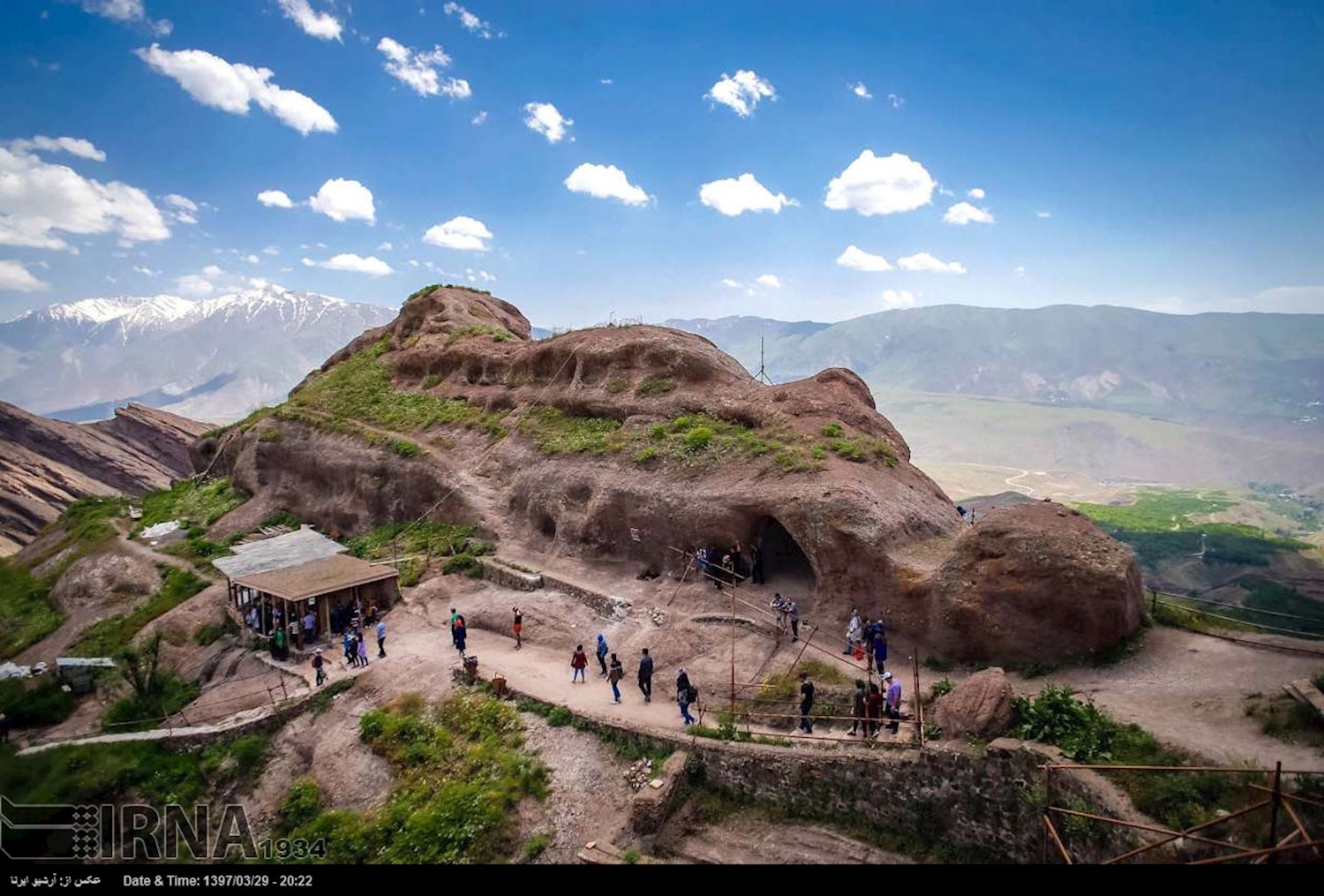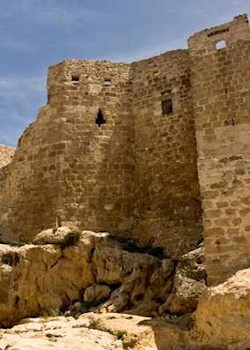Attractions
Alamut Castle
Alamut or Rudbar is a region in Iran including western and eastern parts in the western edge of the Alborz range, between the dry and barren plain of Qazvin in the south and the densely forested slopes of the Mazandaran province in the north.
more
Alamut Castle
Alamut Castle
Figure 1: Beautiful view from the path leading to Alamut
How to access: The region is located in a mountainous region between the provinces of Mazandaran, Tehran, the central part of Qazvin and Rudbar County. The access roads in this region include Qazvin-Alamut asphalt road, Akbarabad dirt road and Bahramabad road, among which the Qazvin-Alamut road has the most traffic.
The entrance square of Qazvin province (Minodar square) is reached upon 135 kilometer on the Tehran-Qazvin highway. The signposts around this square will guide you to Alamut. Alamut with its natural attractions is a part of Iran's history and a source of information over the historical events of this country. This region is in the Alborz Mountain range and located in Qazvin province.
Perhaps the castles of Alamut and Lambsar in this region are the reason Alamut is so famous and plenty of people visit it. The region called Alamut in Qazvin province includes Western and Eastern parts located in the Alborz Mountain range in the northeast of the Qazvin County in Qazvin province, south of Mazandaran and Gilan, west of Taleqan and east of Rudbar. This region is mainly famous because of two castles namely Alamut and Lembsar. On your way to Qazvin, you should change the route to reach Alamut.
It takes about 2.5 hours of driving on this route to reach the historical castle of Alamut. The road and the mountain is so attractive and beautiful which probably makes you stop somewhere on the road to spend some time in the nature.
Figure 2: A beautiful view of Alamut in Iran
This winding road to Alamut passes through rural districts including five hundred small villages that you need to enter the side roads to visit them. Moalem Kalayeh is a large village on this route where many travelers visit to get their necessities.
Moalem Kalayeh village is thirty minutes from the Hassan Sabah castle. Alamut region is largely famous because of two historical castles located there, one of which dates back to the 3rd century (AH) and the other belongs to the Sassanid era. Hassan Sabah and his followers used these two castles as military bases.
Hasan Sabah, the founder of the Ismaili community, mainly resided in Alamut Castle. Located in the northeast of Qasr Khan village on the hills, this castle is about 2100 meters above sea level. In some historical resources the shape of the castle is mentioned to be like a sleeping camel. Alamut castle has been hard to access due to its steep slope, deep valleys and dangerous precipices surrounding it.
These reasons have turned the castle a suitable base to hide the followers of the Ismaili community from the enemies. The cliffs around Alamut are in gray and red colors, which makes the castle two times beautiful.
In 2013, the remnants of the castle were registered in the list of national works of Iran. Lambsar fortress was the second main base, after Alamut Castle, for the Ismailis. This fortress was built in the Sassanid era and is located in the west of Alamut.
Figure 3: An eye-catching view of Alamut in Iran
Hasan Sabah upon dominance on Lambsar fortress chose Kiabzurgamid as the ruler there. Lambsar as a word means “on the bush”. Lambsar Castle is about three kilometers from the Razmian county. The deep and frightening valleys of Neene Rud and Lemeh make it nearly impossible to access the castle. The north and south gates are the only possible ways to enter this fortress. This is the reason Lambsar fortress was almost impregnable as the main defense base against the forces attacking Alamut from the west. The protected region of Alamut is unique in the sense of wildlife diversity and its rich nature in Qazvin province and the whole country.
The activities like hunting and shooting are prohibited in this region which is 118000 HA in area in Qazvin province. This region has suitable pastures, rocky habitats and is covered with forests.
The mountainous nature and special characteristics of Alamut region has made it a habitat to various wildlife species such as antelopes, lynxes, wolves, boars, leopards, brown bears, rabbits, hedgehogs, foxes, jackals, and various birds such as eagles, bearded vultures, partridges, caspian snowcocks, see-see partridges, columbiformes, vultures, and passeriformes (finches, bulbuls). This part of the world is home to a wide variety of reptiles and amphibians, including lizards, snakes, turtles, and frogs and toads respectively.
In addition, the aquatic habitats of the Alamut protected area are home to a variety of fish species, including trout, barbel, and chub fish. There exist three broadleaf forests of oak (forest reserve) and various medicinal species (herbal plants) in Lower Tarim forest and Arasbaran forest and 250 medicinal and aromatic species in Alamut.
Figure 4: Eye-catching view of the path leading to Alamut
Among the historical monuments and tourist attractions of Alamut are Zarabad bloody plane-tree, Ekojan Hajatkhane cave, Shahkoh and Hassanabad stone tombs and more than 30 religious and historical monuments.
Other attractions in this region include Alamut Castle, Nuizer Shah Castle, Lambsar Castle, Shirkuh Castle, Hasan Abad Stone Tomb and Piche Bon Stone Caravanserai, Avan Lake, Hajatkhane Cave, Vali Cave, Sefid Ab Cave, Kharoud Spring, Neene Rud spring. Since Alamut is a hilly region, the late spring and summer are the best times to travel there because the terrain is too challenging during the winter months.
As a result of the area's cool summer evenings, you should probably bring along some warm clothing as well. When you are in Alamut, you shouldn't miss the opportunity to see the lovely Avan lake, which is one of the distinctive and captivating sceneries there.
The Vercher waterfall, which can be found near the Rozjard settlement, has a height of approximately 30 meters and drops into a valley that is quite deep. This waterfall can be reached, albeit with some effort, by a network of unpaved roads on at least a portion of the journey. The months of May through November are ideal for a vacation there.






